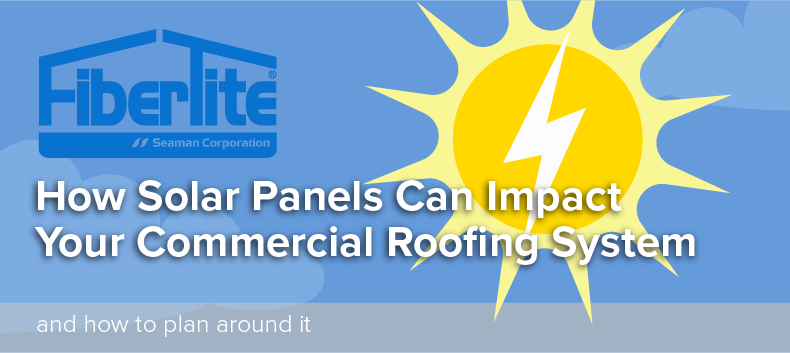
With the need for sustainable energy ever growing, some people turn to solar panels as a potential solution. The overall impact of these solar array systems needs to be taken into consideration; this includes more than just potential cost savings. If the proper steps are not taken, solar panels can negatively impact the performance of your roofing system as well as your wallet.
1. Roof’s Current Condition and Return on Investment (ROI)
As solar panels add a considerable amount of weight to a roofing system, it is important that the current condition of your roof is known. Your first step in the process should be to schedule an inspection and understand the expected lifespan of your current roof.
Generally speaking, it’s advantageous if solar panels are considered during the initial construction plans for a facility. Although solar panels are a rather large upfront cost, you can ensure that you do see a return on investment, as your brand new roofing system should last anywhere from 15 - 30 years depending on the type of roofing membrane you choose.
2. Stress on Roof System
Solar panels are commonly installed through the use of bolting mounts or some other penetrating technique that will need to be sealed properly to avoid premature roof failure. A potential solution to this problem, depending on your roofing system and solar panels, is to utilize a ballasted mounting system. The fewer the penetrations in your roofing system, the better. Again though, you must be mindful of the extra weight and how that weight might put stress on your roofing system, and whether or not your building is designed for the extra load.
3. Maintenance
Just like your roofing system, your solar panel system will require routine maintenance. In order for both systems to perform the way you need them to, you’ll have to invest some capital into their upkeep. Your maintenance options typically depend on how you purchase your solar array system. Some solar panels come with a monitoring system of sorts that will alert you to potential problems. Others do not, in which case more manual monitoring will need to occur.

-1.png?width=500&height=271&name=FiberTite_Only%20(500px%20wide)-1.png)

-1.png)